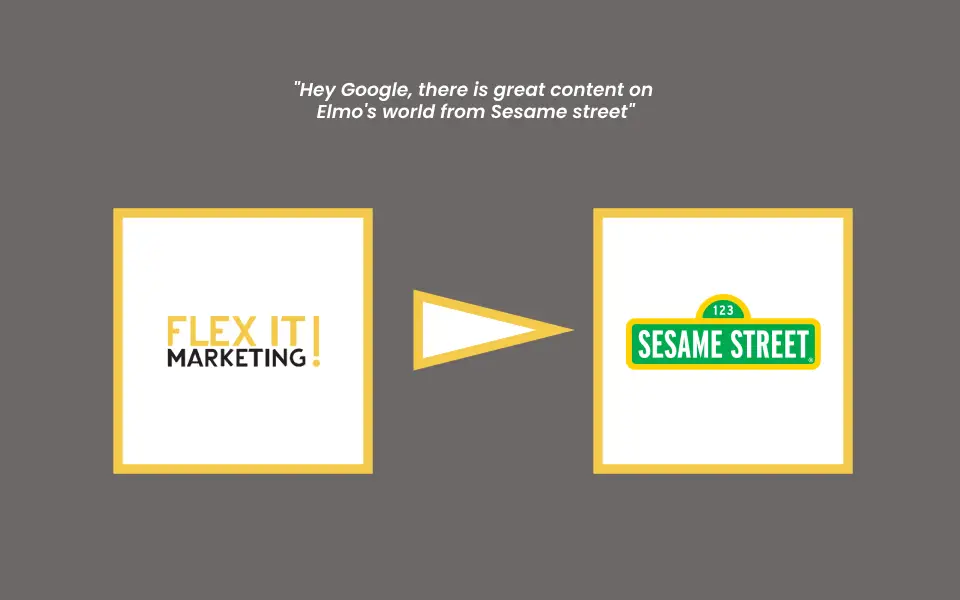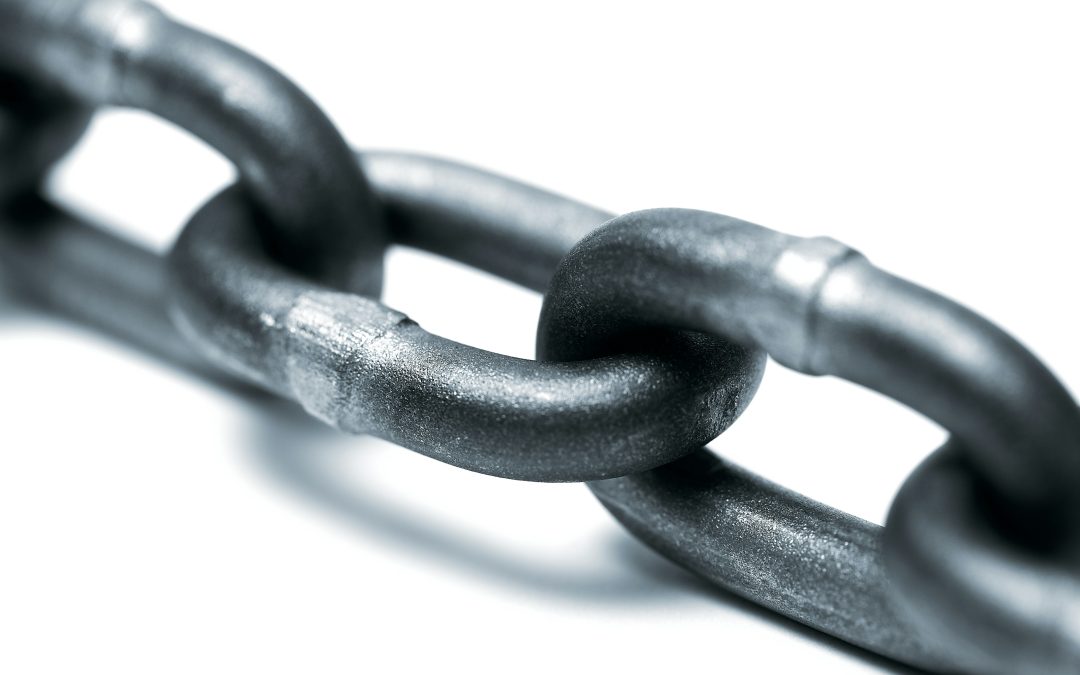Backlinks, also known as inbound links or incoming links, are connections from webpages on other sites to yours. You should check out our On-page SEO article before getting into backlinks if you haven’t.
Backlinks serve as votes of credibility from other sites. When another website links to your content, it’s essentially telling Google,
“Hey Google, this content is valuable, credible, and useful!”

Why Are Backlinks Important?
Backlinks are the cornerstones of website authority and credibility in the eyes of search engines.
Here’s why backlinks matter:
Search Engine Rankings
The more high-quality backlinks your web pages have, the higher the likelihood that they’ll rank well in search results.
Backlinks formed the foundation of Google’s original algorithm (known as “PageRank”). Although Google has made thousands of changes to its algorithm since then, backlinks remain a key ranking signal.
Discoverability
Search engines frequently revisit popular pages. If your content receives backlinks from authoritative or well-visited pages, it’s more likely to be discovered faster.
Beyond search engine perception, backlinks drive direct traffic to your site. When users click on these links from other websites, they’re led straight to your content. This not only boosts your site’s traffic but also enhances brand awareness.
How do I provide a backlink?
Providing a backlink to another website involves placing a hyperlink on your site that directs users to the other site and here is how you do it.
For this instance, our objective is to establish a link from Sesame Street to an article on our website that complements the content.
- Select a page on your website where the backlink would be contextually appropriate. In our case, the article for Elmo’s world.

- Highlight and copy the link that you want to link to
- Highlight the anchor text for the link, which should be descriptive, relevant and offer value to your readers based on the content of the page you’re linking to. Click the link button (which should look like a chain)

- Add the link into the link field box
- Click enter/done/Link

- Click save on the page and you are done, It is that simple.

If you are still having difficulties adding the backlinks, you can check out a video on adding a link to your WordPress website.
What are the different types of backlinks?
Not all backlinks are equal, and their impact on your website’s SEO can vary significantly. Let’s explore the different types of backlinks:
High-Quality Backlinks
- These are reputable, relevant, and authoritative links from well-established websites.
- Examples include backlinks from government sites, educational institutions, industry leaders, and popular news outlets.
- High-quality backlinks positively influence your site’s credibility and search engine rankings.
Low-Quality Backlinks
- These are spammy or irrelevant links from low-quality sources.
- Examples include links from link farms, directories with no editorial control, and unrelated websites.
- Low-quality backlinks can harm your site’s reputation and SEO.
Natural Backlinks
- These occur organically when other websites link to your content because they find it valuable.
- Natural backlinks are ideal and contribute positively to your site’s authority.
Artificial Backlinks
- These are intentionally created through tactics like guest posting, forum signatures, or link exchanges.
- While some artificial backlinks can be beneficial, excessive manipulation can lead to penalties from search engines.
Dofollow vs. Nofollow
- Dofollow backlinks pass link authority and contribute to SEO.
- Nofollow backlinks include a rel=”nofollow” attribute, indicating that search engines shouldn’t follow them.
- Nofollow links are common in user-generated content (comments, forums) to prevent spam.
Anchor Text
- The text used for a backlink’s anchor matters.
- Descriptive, relevant anchor text (e.g., “best winter wear”) is preferable over generic phrases (e.g., “click here”).
Contextual Backlinks
- These appear within relevant content, providing context.
- Contextual backlinks are more valuable than isolated ones (e.g., in footers or sidebars).
What Types of Backlinks Are Valuable?

There are five major signals that Google looks for in a quality backlink, which are
- Authority
- Relevance
- Anchor text
- Placement
- Follow (aka dofollow links) vs. nofollow links
- Destination
Authoritative
Authority represents how influential and credible a webpage is within its niche or topic.
While it may not have been recognised by Google, research has shown that high-authority websites tend to fit these descriptions.
| Experience | The experience that the user gets when on the website. |
| Expertise | Demonstrating knowledge and expertise in a specific field. |
| Trustworthiness | Building trust by providing accurate, reliable content. |
Backlinks from authoritative domains carry more weight. For example, a link from a site like TechCrunch (an extremely authoritative domain) can significantly impact your rankings.
Relevance
Does the description lead the users to where it says it would lead the users?
Google tends to assign higher authority to links that originate from websites or pages sharing a common theme. This is because such links are more likely to be contextually relevant and useful to users. However, this doesn’t imply that you should exclusively seek links from websites that are precisely aligned with your topic.
It’s essential to prioritise links from pages that have a logical reason to reference your site, ensuring that the backlinks contribute positively to your website’s authority and relevance in the eyes of Google.
Anchor text
Keep in mind that anchor text and surrounding content should relate to the relevant topic, helping Google grasp the linked page’s subject and its ranking keywords. Use varied anchor text types.
Overusing your brand name or a single topic in backlinks may trigger Google’s manipulation filters, so the natural backlinks would usually come in a mix of anchor text types and not just the brand names.
Placement
Where you place your link with the anchor text matters.
The most valuable backlinks are those that are strategically placed within the content (i.e. not in the footer or sidebar).
Having the placement of backlinks in the articles also increases the likelihood of visitors seeing and clicking the link, boosting traffic to your site. Aim for these visible, content-based links for optimal SEO benefit.
Follow (aka dofollow links) vs. nofollow links
This is a difference maker when it comes to backlinks. Dofollow backlinks pass link juice and contribute to SEO, while Nofollow backlinks include a rel=”nofollow” attribute, indicating that search engines shouldn’t follow them and they do not pass any authority to another site.
Nofollow links are common in user-generated content (comments, forums) to prevent spam
Destination
These are the general pages that you should build your backlinks to, which are:
| Homepage | This is where people will see your brand for the first time |
| Blog articles/ lead magnets | where you provide values to these visitors |
| Products/ service pages | the pages that you would want Google to rank for |
Website owners typically find little incentive to link directly to your product or service pages, as they tend to want to link to pages that provide informational or valuable insights to their readers.
SEO experts would generally go with making pages that other websites want to link to (i.e: blog articles/ lead magnets). Then, you can use these pages to point back to your products/services pages, which helps those pages show up better in Google searches.
Can I exchange links with website owners that I know?
Well, yes and no.
When there are excessive or manipulative link swaps, it can be considered a link scheme and may lead to the devaluation of those links algorithmically by Google.
The search engine prefers organic and purposeful linking, which is more likely to provide relevant and helpful search results to users.
In essence, you can do link exchange with mutually beneficial websites but not websites that are completely irrelevant to your website.
How do I check my backlinks?
Ahrefs offers a powerful Backlink Checker tool that provides a comprehensive view of any website’s backlink profile.
Are all backlinks good?
When it comes to backlinks, not all are beneficial. Here are some types you should avoid at all cost.
Irrelevant Links

These links come from unrelated or low-quality sites. Search engines prefer natural, relevant, and authoritative backlinks. Irrelevant links can harm your site’s SEO and lead to penalties (e.g: gambling addiction website linking to the Elmo’s world article)
Links from Sites with No Content or Value
Backlinks from sites lacking substantial content or value won’t benefit your SEO. Aim for quality over quantity.
Links from penalised sites
If a site has been penalised by search engines (such as Google), its backlinks may harm your site as well. Avoid links from such sites to maintain your site’s credibility.
Exact-Match or Over-Optimised Anchor Text

Having too many links with exact-match anchor text (e.g., using the same keyword repeatedly like Elmo’s world) can raise red flags. Diversify your anchor text to appear more natural and avoid over-optimisation.
How do you remove spammy backlinks from your website?

Collect Your Backlink Data
Compile a comprehensive list of all backlinks pointing to your website from various sources. You can do this by exporting the links from Google Search Console (GSC) or using other tools.
Identify Bad Backlinks
Conduct a thorough backlink audit to identify the toxic links. Look for patterns that caused the penalty.
Consider the following types of unnatural links:
- Paid links
- Excessive link exchanges
- Automated linking
- Low-quality directory or bookmark site links
- Keyword-rich low-quality links embedded in widgets
- Widely distributed links in site footers or templates
- Forum comments with optimised links.
Remove Bad Backlinks
Reach out to the webmasters of the domains hosting the undesirable backlinks.
Politely request removal of the links. Provide specific details about the problematic links and their locations. Keep records of your communication with webmasters for future reference.
Track and Monitor
Regularly monitor your backlink profile to ensure that the removal process is effective.
Use tools like Ahrefs, Moz, or SEMrush to track changes in your link profile and identify any new spammy links.
Disavow The Remaining Bad Backlinks
If you can’t get certain backlinks removed, create a disavow file.
In this file, list the URLs of the remaining undesirable backlinks that you want Google to ignore.
Submit the disavow file through the Google Search Console to inform Google not to consider those links when evaluating your site.
Conclusion
This is a really long article for us and we hope that we put together what a backlink is, how to link to others. In future articles, we might write about how to get backlinks from other websites. We have also set up a telegram chat that allows you to share your business and connect to other businesses to do link exchanges (Because Google likes brands that are authorities in their industry.)
If you have more to add, you can always drop us an email at info@flexitmarketing.com or you can always reach us through our contact page if you are shy!

